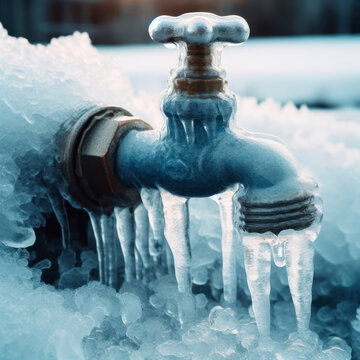This article down the page on the subject of How to prepare your home plumbing for winter weather is totally entertaining. Read it yourself and see what you think of it.

Winter can wreak havoc on your plumbing, specifically by freezing pipelines. Right here's exactly how to avoid it from taking place and what to do if it does.
Intro
As temperature levels drop, the risk of icy pipes rises, potentially resulting in pricey fixings and water damage. Recognizing how to stop icy pipelines is essential for property owners in cool environments.
Prevention Tips
Protecting at risk pipes
Cover pipelines in insulation sleeves or use heat tape to protect them from freezing temperature levels. Concentrate on pipes in unheated or outside locations of the home.
Home heating techniques
Maintain interior rooms adequately warmed, especially areas with pipes. Open up cabinet doors to enable cozy air to flow around pipelines under sinks.
How to identify icy pipes
Search for reduced water circulation from faucets, unusual smells or noises from pipes, and visible frost on revealed pipes.
Long-Term Solutions
Architectural adjustments
Take into consideration rerouting pipelines far from outside wall surfaces or unheated areas. Add additional insulation to attic rooms, cellars, and crawl spaces.
Upgrading insulation
Purchase top quality insulation for pipes, attic rooms, and walls. Proper insulation helps maintain constant temperatures and decreases the danger of frozen pipes.
Protecting Outside Plumbing
Garden hose pipes and exterior faucets
Disconnect and drain pipes garden hose pipes prior to winter months. Install frost-proof faucets or cover outside taps with protected caps.
Understanding Frozen Pipes
What creates pipelines to ice up?
Pipes freeze when subjected to temperatures listed below 32 ° F (0 ° C) for expanded durations. As water inside the pipelines freezes, it broadens, taxing the pipeline walls and possibly creating them to burst.
Risks and damages
Icy pipes can result in water supply interruptions, building damages, and expensive repairs. Ruptured pipelines can flooding homes and create considerable architectural damage.
Indicators of Frozen Pipeline
Identifying icy pipes early can stop them from rupturing.
What to Do If Your Pipes Freeze
Immediate actions to take
If you think icy pipelines, keep taps available to soothe pressure as the ice thaws. Use a hairdryer or towels taken in hot water to thaw pipelines slowly.
Final thought
Preventing icy pipelines calls for aggressive measures and fast actions. By recognizing the reasons, signs, and safety nets, property owners can secure their pipes throughout cold weather.
5 Ways to Prevent Frozen Pipes
Drain Outdoor Faucets and Disconnect Hoses
First, close the shut-off valve that controls the flow of water in the pipe to your outdoor faucet. Then, head outside to disconnect and drain your hose and open the outdoor faucet to allow the water to completely drain out of the line. Turn off the faucet when done. Finally, head back to the shut-off valve and drain the remaining water inside the pipe into a bucket or container. Additionally, if you have a home irrigation system, you should consider hiring an expert to clear the system of water each year.
Insulate Pipes
One of the best and most cost-effective methods for preventing frozen water pipes is to wrap your pipes with insulation. This is especially important for areas in your home that aren’t exposed to heat, such as an attic. We suggest using foam sleeves, which can typically be found at your local hardware store.
Keep Heat Running at 65
Your pipes are located inside your walls, and the temperature there is much colder than the rest of the house. To prevent your pipes from freezing, The Insurance Information Institute suggests that you keep your home heated to at least 65 degrees, even when traveling. You may want to invest in smart devices that can keep an eye on the temperature in your home while you’re away.
Leave Water Dripping
Moving water — even a small trickle — can prevent ice from forming inside your pipes. When freezing temps are imminent, start a drip of water from all faucets that serve exposed pipes. Leaving a few faucets running will also help relieve pressure inside the pipes and help prevent a rupture if the water inside freezes.
Open Cupboard Doors
Warm your kitchen and bathroom pipes by opening cupboards and vanities. You should also leave your interior doors ajar to help warm air circulate evenly throughout your home.

We are very interested in Winter Plumbing Precautions: Preventing Frozen Pipes and I'm hoping you enjoyed reading the piece. I beg you take the opportunity to share this blog posting if you appreciated it. Thank-you for going through it.
Click Here
Comments on “Tips to Protect Pipes from Freezing Issues: Important Advice”